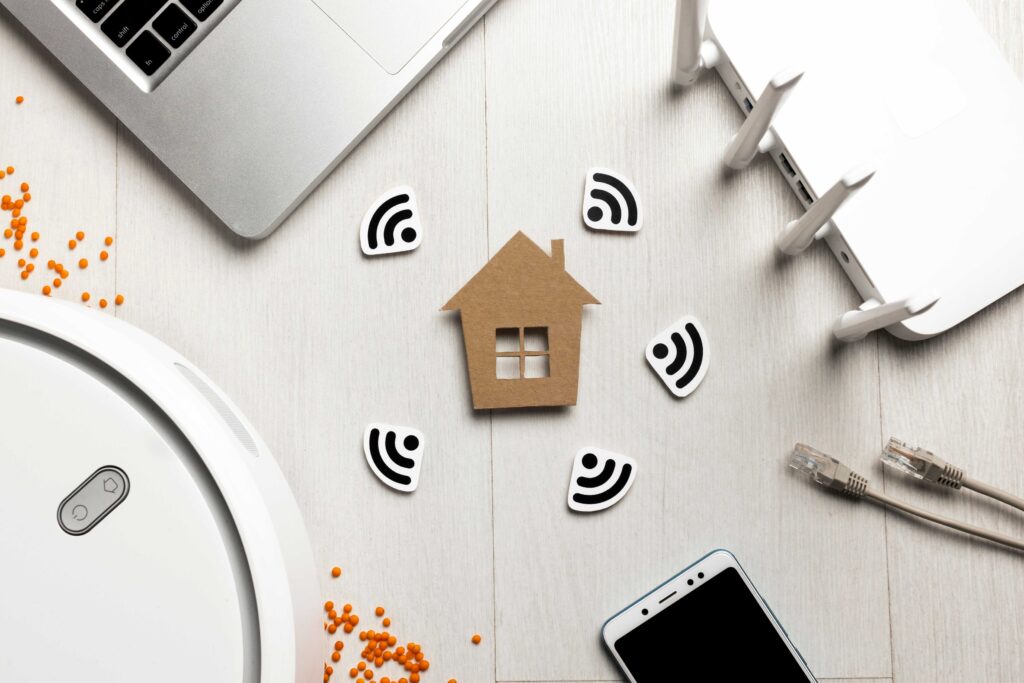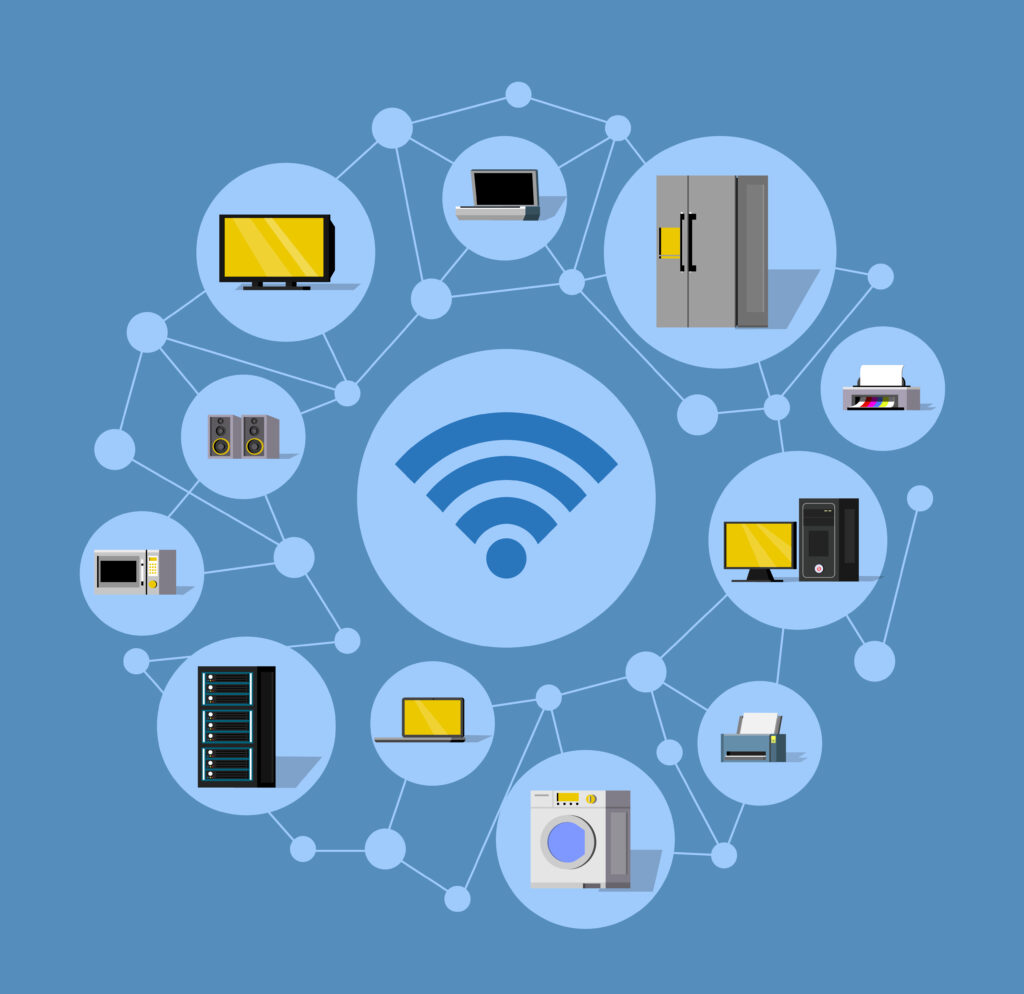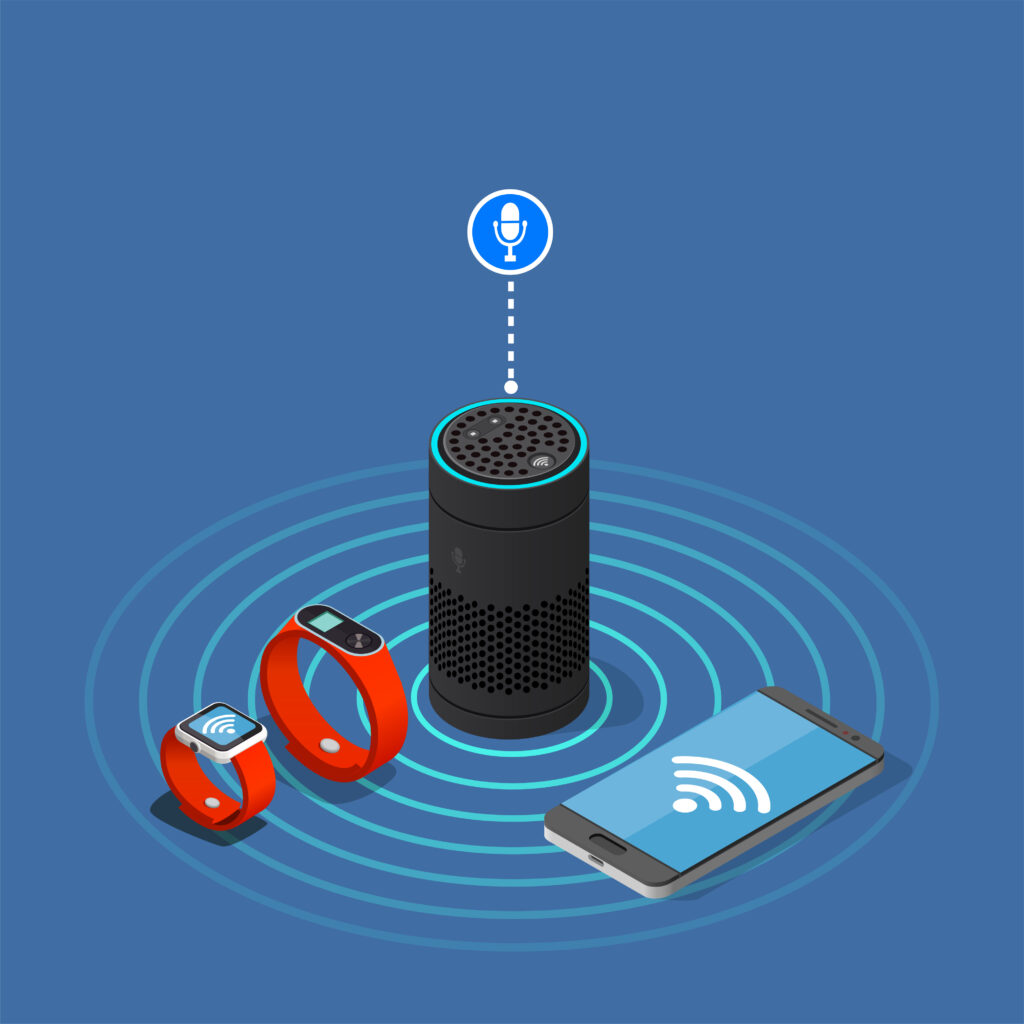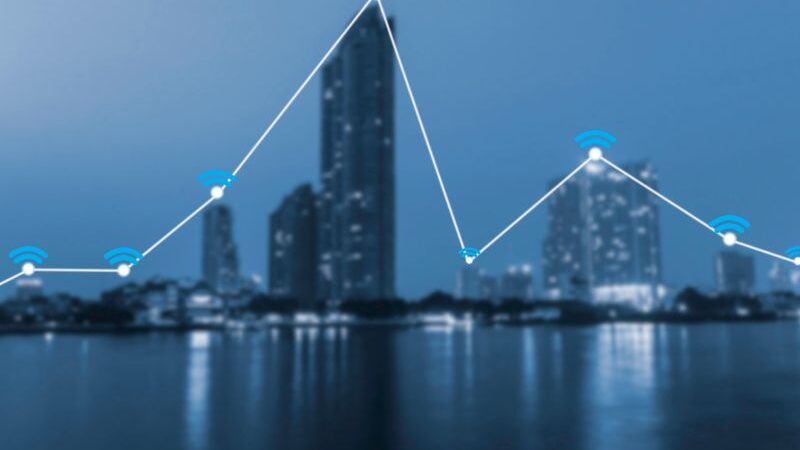Introduction
A groundbreaking technology known as Wireless Sensor networks (WSNs) appeared in an age of cables and wires. When it comes to connectivity, these networks have entirely altered the rules of the game. Physical connections are no longer a limitation because everything is now wirelessly connected thanks to Sensor Networks.
Wireless Sensor Networks are simply a collection of tiny, self-contained sensors that can sense and collect information from their surroundings. These sensors then wirelessly communicate this data to a base station or a central receiver. As a result, data collection from even the most remote areas is possible without the need for time-consuming wiring installations.
The possibilities for this networking is simply astounding. These networks can track and optimize industrial processes in addition to monitoring environmental conditions and anticipating calamities. Imagine a network of sensors that could track and regulate everything from your daily step count to temperature, humidity, and air quality. WSNs are capable of that and more!
Benefits
But wait, this wireless nirvana is more than that. It have a variety of benefits. First off, the lack of cables results in less expensive installation and maintenance. Second, these networks are appropriate for a variety of applications because of their flexibility and scalability. Not to mention the improved data accuracy and quality that Wireless Sensor Networks provide. Stop questioning or sacrificing the accuracy of your data.

Obstacles to Overcome
There are obstacles to overcome, though, just like with anything worthwhile. It can be difficult to implement Wireless Sensor Networks because of problems with power management, network security, and device location. To overcome these obstacles and ensure a successful deployment, rigorous planning and smart decision-making are necessary. But hey, no one ever said overcoming the future would be simple, did they?
The future of Wireless Sensor Networks Is Bright
We may anticipate ever more compact, intelligent, and energy-efficient sensors as technology develops. Imagine living in a world where every square inch is covered in intelligent, linked sensors that collect and analyze data to make our lives better. Without the alien invasion, it’s like living in a science fiction film (hopefully).
The Wireless Revolution Is Unstoppable
Wireless networks have opened up a world of opportunities and changed the way we connect to and engage with our surroundings. These networks are laying the foundation for a more promising, wire-free future with their limitless uses and wealth of benefits. So fasten your seatbelt and get ready to ride the wireless innovation wave!
What are Wireless Sensor Networks?
Let’s explore the interesting realm of WSNs now, my intrepid readers. Imagine a network of minute sensors dispersed around the area that can wirelessly communicate with one another to gather and transmit data. These sensors may be keeping an eye on the humidity, the temperature, or even motion. You did hear correctly. The days of large wired sensors are long gone, and we have come a long way since then.
Wireless Sensor Networks are Sweeping The Networking Industry
Across a variety of industries, including environmental monitoring, healthcare, agriculture, and even smart homes, they are transforming the way we collect data. These networks provide a cost-effective, wireless way to collect real-time data without having to deal with conventional connections. Get rid of the tangled connections!
Countless Opportunity with Wireless Sensor Networks
There are countless opportunities with Wireless Networking. Need to keep an eye on the forest’s air quality? You’re covered by WSN. Wish to monitor the status of the crops in a sizable farming region? WSNs can come to the rescue. My friends, there are a ton of uses, and invention knows no bounds.
Obstacles to Overcome
There are obstacles to overcome, though, just like with any technology. Implementing Wireless Sensor Networks is difficult due to the power requirements of the sensors, the dependability of wireless connections, and security issues. Fear not, though, as professionals and researchers are working hard to find solutions to these problems and open the door to a better future.
Potential for Wireless Sensor Networks
The potential for Wireless Sensor Networks is enormous. Imagine living in a linked, fluid communication-based environment. Imagine a world where the environment collects information to improve the efficiency and ease of our lives. That, my friends, is the fascinating future that Wireless Sensor Networks hold for us.
So secure your seat and prepare to appreciate this amazing masterpiece. With its ability to make our lives smarter, greener, and more connected than ever before, sensor networks are here to stay.
Don’t forget to give thanks to the small sensors working so hard in the background!
Applications of Wireless Sensor Networks
WSNs are more than simply a trendy term in technology. No, they have amazing uses in the actual world! Let’s examine some of the astounding ways that WSNs are transforming our environment.
1. Environment Monitoring:
When it comes to keeping an eye on our environment, WSNs are akin to superheroes in stealth. They have the ability to gauge air quality, temperature, and humidity. One data point at a time, scientists can save the Earth with these clever little sensors. With Wireless Sensor Networks, who needs Captain Planet?
2. Agriculture:
Farmers no longer need to rely on hunches about what their crops’ needs are. WSNs now offer real-time information on soil conditions, crop diseases, and moisture levels. It’s like each tomato plant has its own personal assistant. The outcome? efficient use of water, increased crop yields, and contented farmers.
3. Healthcare:
The healthcare industry is also benefiting from wireless sensor networks. They can keep track of patients’ vital signs, look out for older people who might fall, and transport medical equipment. The days of nurses constantly prodding and poking you are over. WSNs simplify monitoring, giving clinicians more time to binge-watch their preferred medical dramas.
4. Smart Cities:
Imagine living in a city where everything is interconnected. You name it: traffic signals, parking spaces, trash management techniques. Smart cities are now a reality thanks to WSNs. They streamline urban services, lessen traffic congestion, and optimize energy consumption. Without the flying cars—we’re still waiting, Elon Musk—it’s like it’s residing in a dystopian future.
5. Wildlife Conservation:
The benefits of Wireless Sensor Networks extend to our feathered and furry friends as well. These amazing networks are able to monitor animal habitats, analyze animal movement patterns, and even spot poaching activity. We can safeguard wildlife and assure their survival with WSNs. Team humanity, go!
Wireless networking has a virtually infinite number of uses. Everything is becoming more connected and intelligent than ever thanks to these small sensors. WSNs are paving the path for a better future by enhancing healthcare, monitoring the environment, and building sustainable cities.
Who knew a few sensors could have such a significant impact? It merely serves as proof that occasionally the tiniest things can trigger the most profound revolutions. So let’s embrace these intelligent networks and keep expanding the realm of possibilities. Friends, Wi-Fi is the way of the future!

Advantages of Wireless Sensor Networks
With their many benefits, wireless sensor networks have taken the world by storm. A completely new world of possibilities has been made possible by these tiny sensors that have wireless communication capabilities. Let’s examine some of the main benefits they provide:
Advantage:
- Economical: Wireless sensor networks are an economical alternative for many applications because they do not require expensive wiring systems. Laying cables is a bother, and the related costs are a pain.
- Scalability and Flexibility: Unlike conventional wired networks, wireless sensor networks allow for the simple addition or removal of sensors. You can easily expand or modify the network as your needs change without experiencing any significant disruptions.
- Easy Deployment: The lack of wires makes wireless sensor network deployment straightforward. Because they can be installed in difficult-to-reach locations, sensors are ideal for monitoring remote areas, industrial settings, or even natural environments.
- Real-Time Data: Wireless Sensor Networks enable the collection of real-time data from numerous sources, enabling quick decision-making. Operations are optimized and efficiency is raised as a result of the capacity to quickly adjust to changing circumstances.
- Energy Efficient: Wireless sensor networks are built with energy-efficient sensors that use less power while providing dependable performance. This decreases total energy consumption while also extending the life of their batteries.
- Diverse Applications: Wireless sensor networks have an almost infinite number of applications. They are transforming a variety of industries, from environmental monitoring and healthcare systems to smart cities and agriculture.
Because they are not limited by wires, wireless sensor networks provide an affordable, flexible, and efficient connectivity solution. They are revolutionizing the way we connect with the environment around us thanks to their simple deployment, real-time data, and adaptability. Join the wireless revolution and welcome the age of connectedness by doing so!
Let’s now examine the difficulties associated with putting in place wireless sensor networks and the fascinating potential they provide.
Challenges in Implementing Wireless Sensor Networks
We are now prepared to explore the issues associated with developing wireless sensor networks. Get ready for a wild ride as we explore the obstacles that stand in our way on this thrilling connectivity journey.
Let’s talk about power consumption first and foremost. These microscopic sensors are ravenous little creatures that consume energy more quickly than my dog consumes biscuits. Finding a balance between the sensors’ power needs and their battery life is a never-ending struggle. Perhaps we ought to create a sensor that, like me, can live off of coffee and solar power.
The issue of scalability comes up next. Yes, setting up a few sensors is simple, but what happens when you want to link thousands of devices or cover enormous areas? All of a sudden, it seems like searching for a needle in a haystack full with even smaller needles. It’s similar to playing “Where’s Waldo?” using Wi-Fi signals as the objects.
Security should not be overlooked because it would be really convenient. Unwanted visitors might always show up at a gathering with wireless connectivity. The terrible reality of hackers and data breaches makes it difficult to defend these networks. It’s comparable to trying to keep your secrets private while whispering in a room full of listeners. I wish you luck in that!
Not to mention, interoperability continues to be a problem. The creation of seamless communication between many devices might be a headache because each vendor might have its own proprietary protocol. It’s comparable to attempting to call a buddy with a rotary dial phone only to discover that they have a smartphone. Talk about remaining in the stone age of technology!
The Future of Wireless Sensor Networks
The future of wireless sensor networks appears promising as the globe gets increasingly inter-connected. The way we live and interact with our surroundings is about to undergo a revolution because to these networks of tiny sensors that can connect wirelessly. Now let’s look ahead and see what the future holds for wireless sensor networks!
But there’s more! Healthcare is another industry where wireless sensor networks have a bright future. These networks utilized to remotely monitor patients, giving health care providers access to their vital signs and the ability to detect any irregularities in real time. This allows for quick interventions that might save lives in addition to saving time and resources. It’s like having a personal health assistant who is always keeping an eye on your wellbeing by your side.
And let’s not overlook how wireless sensor networks affect the environment. These networks are essential for maintaining and monitoring our natural resources since they have the capacity to collect data on a variety of variables, including temperature and humidity. Wireless sensor networks are the hidden heroes of environmental conservation, whether they are used to predict forest fires, monitor water quality, or track the migrations of wildlife.
With every technology, there are problems to be overcome, of course. Wireless sensor networks need to find solutions to their scalability, power consumption, and security issues in order to be successful. But, thanks to technological breakthroughs, these difficulties are surmountable, opening the door to a time when wireless sensor networks are effortlessly integrated into our daily lives.
Conclusion
We have now completed our exploration of the fascinating realm of wireless sensor networks. Let’s quickly review the most important lessons we’ve discovered thus far.
First off, wireless sensor networks (WSNs) are a revolutionary technology that enables wireless, hands-free communication between devices. These networks consist of microscopic sensors that collect data, wirelessly transfer it, and make it available for research.
We then looked at the numerous uses for wireless sensor networks. These networks are transforming sectors by giving real-time data and facilitating improved decision-making, from environmental monitoring to healthcare and smart cities.
The benefits of wireless sensor networks also covered. Even in remote and difficult-to-reach places, they are easily deployable and cost-effective. These networks are fostering innovation and advancing research in a variety of sectors thanks to their capacity to gather vast volumes of data.
But, life in the domain of wireless sensor networks is not always easy. We discussed the difficulties of putting this technology into practice. Obstacles including power usage, security concerns, and data management must be eliminated for wider adoption.
But do not worry, since Wireless Sensor Networks appear to have a promising future. Future networks should be considerably more effective and dependable thanks to technological improvements. We’re quite excited to watch how these networks will affect many businesses in the future.
We have now completed our blog post on wireless sensor networks. We sincerely hope you have enjoyed this voyage as much as we have. Keep in mind that wireless communication is the way of the future, and wireless sensor networks are leading the way in this transition. So fasten your seatbelts and prepare for a thrilling voyage into the future.

Visual representation of wireless devices
FAQs
Two to four digital channels and four analog input channels, which can be separately configured for input, sinking output, or sourcing output, are present in each measurement node. Four AA alkaline or lithium batteries can power a node for up to three years. The measuring nodes feature -40 to 70 °C temperature ranges, industrial shock and vibration ratings, and 2.4 GHz IEEE 802.15.4 radios with up to 300 m of line-of-sight outdoor communication range. Flexible connectivity to Windows or real-time OS controllers is provided by the 9 to 30 V externally-powered gateways.
You may rapidly and simply retrieve measurement data from your WSN using NI-WSN software, which offers seamless LabVIEW interaction. The nodes configured with the gateway in MAX automatically populate in the LabVIEW Project after you add aNI WSN gateway, providing you immediate access to their I/O and properties. For data extraction, analysis, and presentation, only drag and drop I/O variables from the LabVIEW Project to a LabVIEW Block Diagram.
A 2.4GHz IEEE 802.15.4 radio used by the NI WSN Gateways and Measurement Nodes. The US versions of these gadgets have a 300 m line-of-sight outside range for reliable network communication. Depending on the geographic model, network traffic, network topology, and RF environment, the precise device-to-device range will change.




Leave a Reply